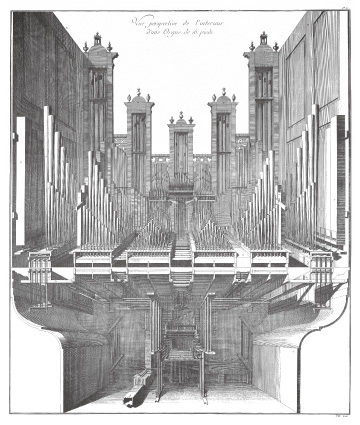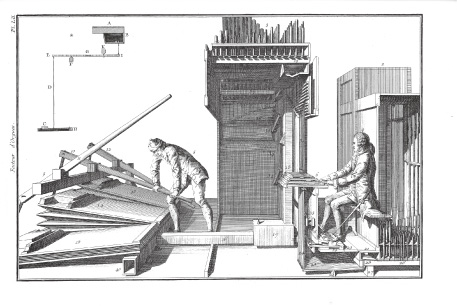古代や中世のオルガンは人間大のサイズで作られていたが、近世に入って巨大化し、この18世紀の図に見られるように、オルガニストは機械装置の中にはめ込まれた小部屋の中で演奏せざるをえなくなった。日常生活で自動装置に接する機会をめったに持つことのできなかった市民が、演奏者の姿の見えない、家ほどの大きさの楽器から教会堂を満たす和声が出るのを聞けば、きっと神の威勢を感じただろうと容易に想像することができる。
From Antiquity to the Middle Ages organs were built human size, but from the Renaissance on they incredibly increased in size, so that the players were forced to sit in a small chamber between the mechanical devices, as these drawings from an 18th century source show. It is easy to imagine that a citizen of that time, who had rarely the chance to see automatic devices in his or her daily life, may have felt the power of god, when a house-sized instrument without a visible player filled the whole church with harmonies.

JPG

上:後ろから見たオルガン。
右上:オルガンの演奏。フランソワ・ベドー・ドゥ・セル著『オルガン製作法』第4部、1788年より。
Above: Organ performance (François Bédos de Celles, L’art du facteur d’orgues, Quatrième Partie, 1778)
